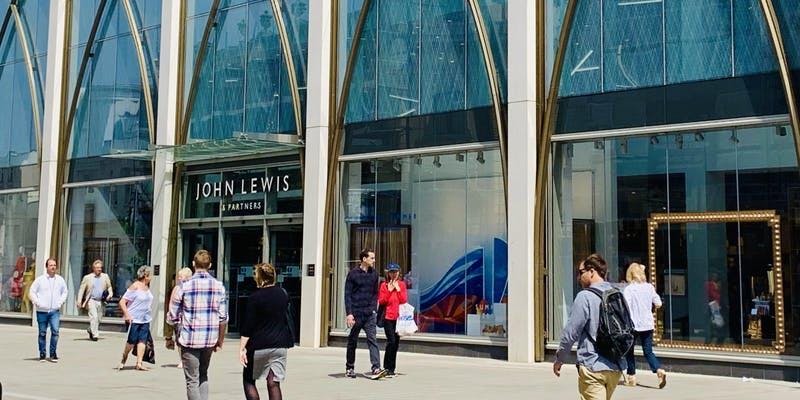Managing Director, David Jones discusses the future of the UK High Street and the subsequent changes and developments that need to be made to adapt to the 21st Century

Ask me what the high street will look like in 20 or 30 years and I have to say it's difficult to answer. So much will change because our lives will change.
Will travel be completely different to now because of the lack of fossil fuels? Will we be travelling less and therefore going back to local centres to do our shopping? It's difficult to predict and the only certainty is that there will be change.
Are current opening hours fit for purpose? In a world where most couples work, is it really sustainable for retail opening hours to be aligned with normal working hours? A cultural change is required to encourage people to use town centres for more than bars and restaurants during the evening hours.
The high street can't just be about retail, that's for certain. If you get the other bits right, retail will follow.
High streets will get smaller and shrink into a central core and they will have to operate in a similar way to how outlet villages and large retail centres like Westfield, Bicester, Swindon Design Outlet or Gloucester Quays operate.
The Quays is a great example in that there is an overarching single landowner in place that is able to make big and important strategic and holistic decisions for the good of the retail offering as a whole. This can include facilitating and, in many instances funding, festivals, activities and specialist bespoke events.
 For example, the Christmas ice rink at Gloucester Quays, increasing footfall by as much as 20%. All those extra people would have used the other facilities while they were there and spread the word to friends and family. The result is increased 'spend' in the retail outlets.
For example, the Christmas ice rink at Gloucester Quays, increasing footfall by as much as 20%. All those extra people would have used the other facilities while they were there and spread the word to friends and family. The result is increased 'spend' in the retail outlets.
Developments like Christmas ice rinks require significant initial investment in the first few years. However, in time they become self-sufficient and self-funding. The increased footfall funds the activity, whilst generating increased sales for retailers.
What a high street doesn't have is that overarching organisation to take the lead and think of the bigger picture. A BID or the LEP or even the local authority can, it doesn't matter who but someone needs to provide that leadership and vision in order to properly plan ahead to give people a reason to go to the high street and to keep them coming back.

Landlords have had it too good for too long, if they don't start to think imaginatively, then they will lose out. There needs to be a multi-functional approach and that will require some imagination both from the owners and the local authorities too. The Brewery in Cheltenham is an example of how quickly this is evolving, when that was at the design stage it was envisaged that ground and much of the first floor areas would be occupied by retailers. That has changed in the years since and now we have SLG occupying a huge office space and Hub 8 with co-working office space in there too.
People thought that office space wouldn't work because it is too reliant on parking, but those two examples show that town centre quality office space can work. Furthermore, when people are working in an area they wander round it too. That creates vibrancy and people like being in vibrant, interesting and busy places.
Authorities have to realise, and some are, that there is value to having activity above ground floor retail premises and that planning policies should be changed accordingly. In many respects, it doesn't matter what that activity is - offices, flats, student accommodation, education establishments, entertainment venues, they all have a part to play in creating a vibrant town where people want to live, work, shop and play.
Landlords need to do similar, there are many institutional landlords that are beholden to pension funds or the bottom line and failing to adapt and think 'what if'. If Cavendish House in Cheltenham or Debenhams in Gloucester were to leave, there wouldn't be a single-use occupant to replace them. The landlords have to change and adapt, they should be thinking proactively about what will come next, even if it doesn't seem as though it will be needed.
The high street operation is an old system and it needs to adapt and evolve to meet the modern day demands and working practices. The growth of online shopping is unlikely to slow and therefore, retailers must embrace the online world and provide a seamless and complementary offering of both physical and online retailing.
 More and more 'experience shopping' outlets will exist where you touch and feel but purchase elsewhere. It's what Apple do now, you go into their shop, you look, touch and feel the product but you don't necessarily buy in store. Other retailers have followed that theme, Tesla and Dyson for example. The actual purchase is made online, but both parts are vital. You don't do one without the other. The crucial thing is that when you're doing that first part, you want somewhere to eat, drink and be entertained. All that needs to be part of the condensed central core that will be the modern high street.
More and more 'experience shopping' outlets will exist where you touch and feel but purchase elsewhere. It's what Apple do now, you go into their shop, you look, touch and feel the product but you don't necessarily buy in store. Other retailers have followed that theme, Tesla and Dyson for example. The actual purchase is made online, but both parts are vital. You don't do one without the other. The crucial thing is that when you're doing that first part, you want somewhere to eat, drink and be entertained. All that needs to be part of the condensed central core that will be the modern high street.
Retail is now just a piece of the jigsaw. A vital one, but one that won't be complete until you add the other pieces and have someone thinking about the bigger picture.
The original article was published in Punchline December 2019, you can view it online here.
